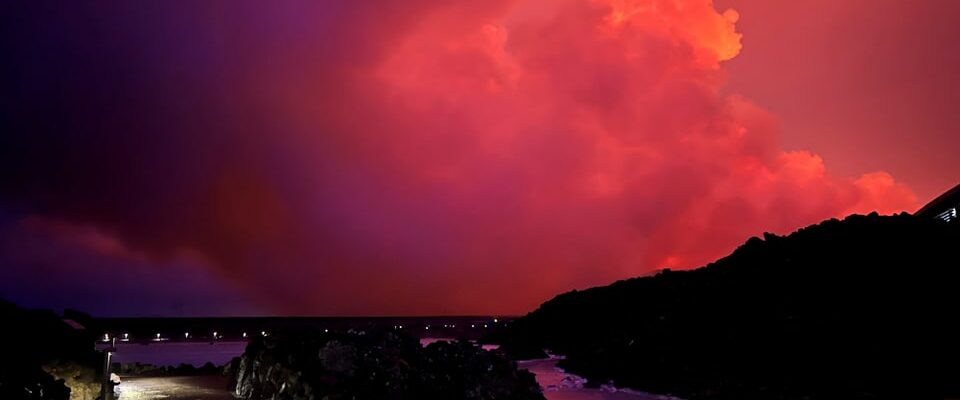- A volcano has erupted in Iceland for the fourth time in four months.
- Lava poured out of the fissure in the earth, which was initially around 3.5 kilometers long, on the Reykjanes Peninsula in the southwest of the North Atlantic island.
- The electricity threatened a district heating pipeline and an important road to the coastal town of Grindavík on Sunday, as the broadcaster RUV reported.
Geophysicist Magnús Tumi Guðmundsson spoke on Sunday morning of the “most powerful eruption to date” in the region near the Blue Lagoon.
Residents feared that the lava would reach the small town of Hraun. However, the speed decreased significantly by Sunday afternoon. Sudurnes region police chief Úlfar Lúðvíksson said the lava was creeping forward at about 20 meters per hour. It is unclear whether that is enough to reach the main road or the sea.
Legend:
Only a few people had returned to the port town of Grindavik and were now brought to safety again.
Reuters/Jorge Reis
The popular tourist attraction Blue Lagoon, where around 700 people were on Saturday evening, was evacuated again, as was the town of Grindavík, around 55 kilometers southwest of Reykjavik. Only a few people had recently returned to the town, which once had a population of 4,000 and was evacuated as a precaution in November. Air traffic to Keflavik International Airport was not affected.
The region is struggling with the consequences of the lava
Specially constructed dams stopped and diverted the lava as planned, said Einar Hjörleifsson from the Icelandic Meteorological Office. There is currently no danger to people. However, the lava masses moved closer to an important district heating pipeline. During an eruption in February, district heating supplies were interrupted for more than 20,000 people after lava flows destroyed roads and pipelines. The authorities announced the construction of a new road.
The new eruption occurred on Saturday evening at 8:23 p.m. local time (9:23 p.m. Swiss time) between Stóra-Skógfell and Sýlingafell on the Reykjanes Peninsula.
During the eruption in mid-January, the lava also reached the foothills of Grindavík and destroyed several houses there – it was the first time in half a century that homes had been destroyed by lava masses in an eruption on the North Atlantic island. The future of the community is uncertain. The government has already presented a draft law that would allow residents to sell their residential property to a state-owned company.
The Icelandic Meteorological Office said early on Sunday morning that the lava was continuing to flow south and southeast at an estimated speed of one kilometer per hour. The scenario that the lava reaches the sea must be taken into account.
Not a classic volcanic eruption
Some experts warn of a long-term threat to the area. Volcanic eruptions could last for years or even decades, warned expert Björn Lund from the Swedish University of Uppsala, among others. Authorities began building special dikes months ago to divert possible lava flows from homes and critical infrastructure.
The eruptions do not look like what you would imagine a classic volcanic eruption to be: the lava does not bubble up from a volcanic mountain, but flows out of an elongated crack in the earth, which is why this type of eruption is also called a fissure eruption. Unlike the Eyjafjallajökull eruption in 2010, such eruptions do not produce a large ash cloud – the volcanic glacier paralyzed international air traffic for days with such a kilometer-high cloud.

